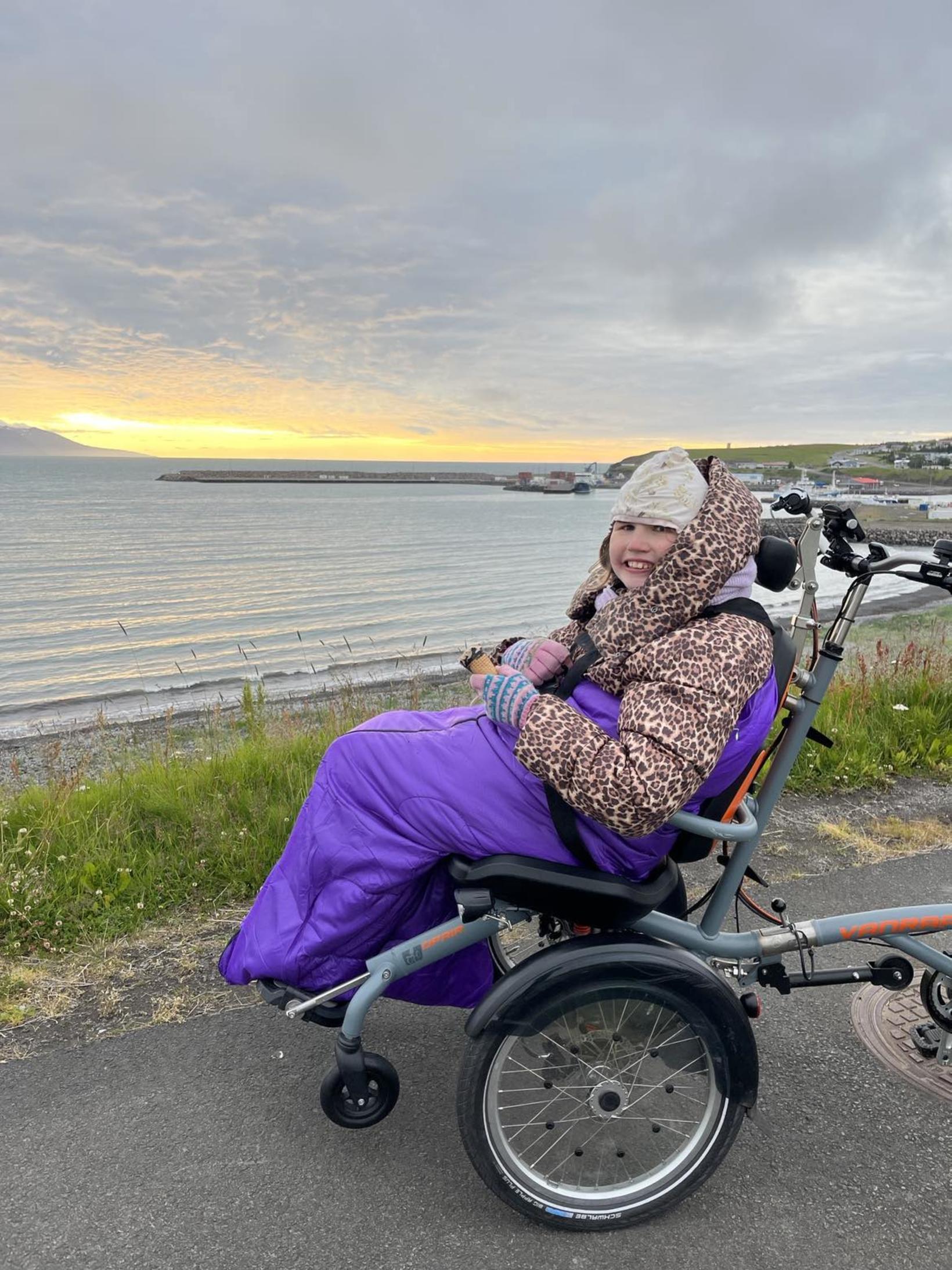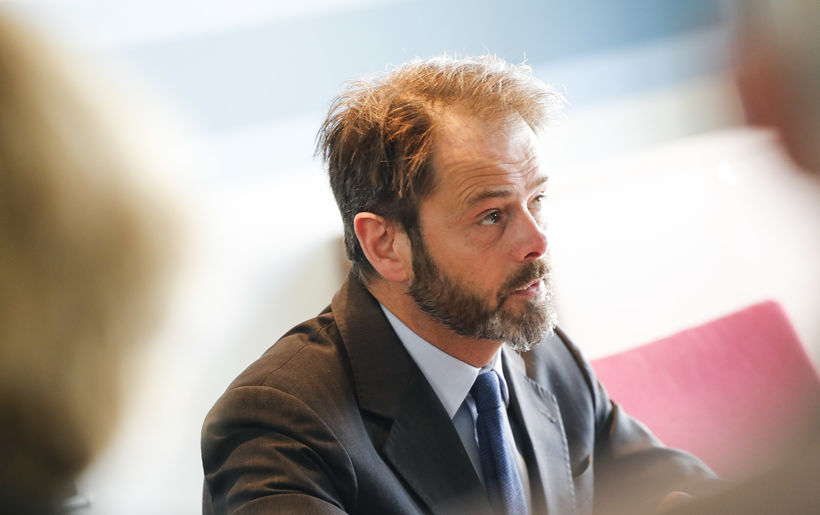llegal to deny this aid according to the Ombudsman of Alþingi
The wheelchair bike has brought Sunna Valdís Sigurðardóttir að lot of joy and she wants to ride it every day. Photo/Sent to mbl.is
Iceland’s health insurance did not comply with the law when they refused to grant a subsidies payment to Sunna Valdís Sigurðardóttir, who has a rare neurological condition, for the purchase of a tricycle that would allow her to ride by herself.
This is the conclusion of the Ombudsman of Alþingi, the Icelandic Government, according to Sigurður Jóhannesson, the father of Sunna Valdís Sigurðardóttir.
Jóhannesson says the family is aware of the number of children who have been refused on the same grounds, so the conclusion of the Ombudsman, which has not yet been published, must be exemplary.
Refusal because the device was "for recreational use"
“Children in her position do not receive subsidized aids unless they are vital for them to get from A to B. Now, the ombudsman is concluding that devices used for recreation and exercise should be state-sponsored, just like vital aids. It completely changes this game,” Jóhannesson tells mbl.is. The tricycle costs upwards of a million and a half ISK.
The Welfare Appeals Committee confirmed the decision of the Health Insurance Trust in May last year, as the device was not necessary for Sigurðardóttir in order to perform daily activities, but the Ombudsman struck a chord with the ruling coalition. However, her father is not convinced that the opinion will lead to a change in the practice.
Costs about a million and a half ISK
Sigurðardóttir is seventeen years old and suffers from a very rare neurological disorder called Alternating Hemiplegia of Childhood (AHC), which has all the hallmarks of other eye diseases and causes problems with walking and coordination, among other things.
Skúli Magnússon is the Ombudsman of Alþingi and he has come to the conclusion that the Health Insurance is not complying with the law in denying subsidies on the wheelchair bike for Sigurðardóttir. mbl.is/Eggert
“The bike we are applying for is a bike where we can sit side by side and she can ride her own bike. We were thinking of this as a training exercise for her. It’s very difficult to get her physical therapy and the like because of her illness. But this was intended to strengthen her."
She prefers to be on this bike every day
Today, Sunna uses a wheelchair bike, which brings her great joy.
“She’s on her third bike, we bought her first one in 2013. She likes to be on that bike every day. On some days we spend up to five or seven hours on it because she doesn’t want to go home. This has completely changed her life," he says.
The tricycle works by allowing her to cycle herself and rest in between.
“She can stop cycling and I can take over. We always cycle together or I just ride alone and she rests. Then, once she has regained her strength, she can cycle again.”
Hopes The Health Insurance starts complying with the law
The Ombudsman is recommending that the Health Insurance Commissioner should take a different approach if Sigurðardóttir reapplies.
“This is a big change if the Health Insurance Administration then starts complying with the law. Which they did not do after a manager came up with a similar opinion in 2021. Then there was a woman who wanted to get a helper wheel on the front of her wheelchair,” Jóhannesson recalls, adding that the woman died the week before the opinion was published. He expects a change in practices and it is important that institutions are held accountable to act according to the law.
Asked if the ruling was crucial for his daugther, he says:
“We’re doing this for others mainly. We’ve always done everything in our power to make life as comfortable as possible for her. We give her priority over anything else and buy her the tools she needs, even though we’re always dealing with this system that always denies her aids.”
Sunna Valdís Sigurðardóttir was the lead in a documentary about AHC called Human Timebombs. The documentary premiered in Washington in 2015 and is now being used as teaching material in many of the world’s largest universities. The film can be viewed here below.







/frimg/1/53/30/1533092.jpg)

